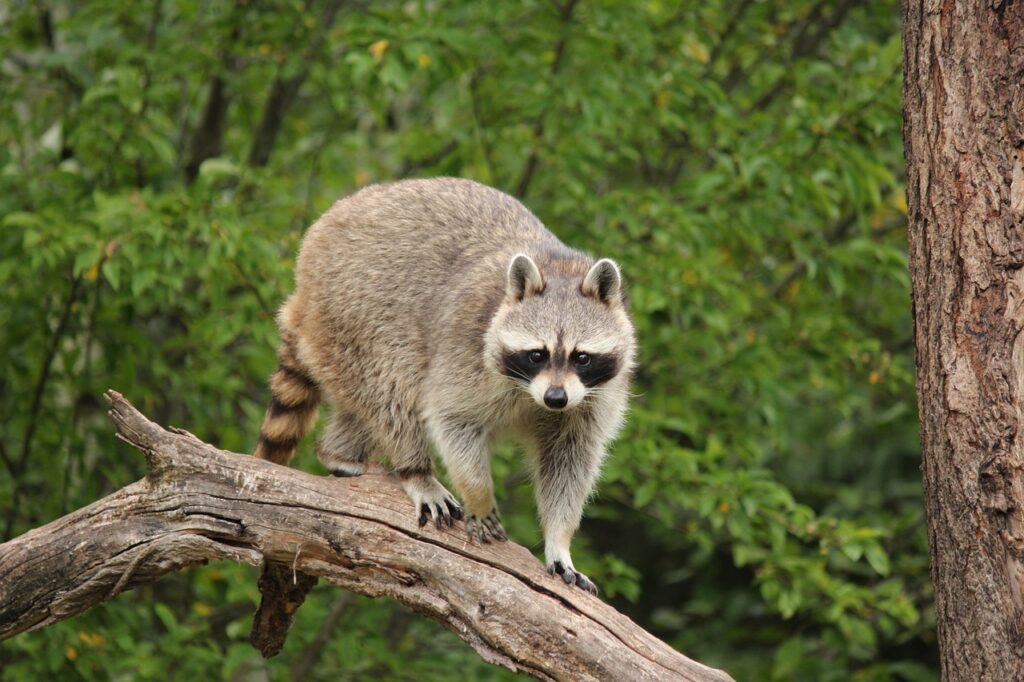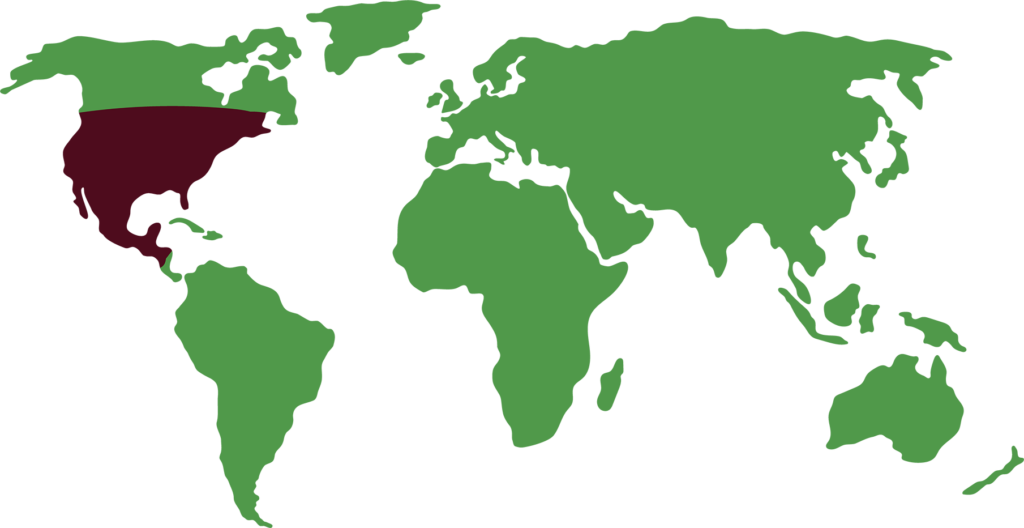NORTHERN RACCOON
Procyon lotor

LENGTH

70 cm
WEIGHT

10 kg
LIFESPAN

15 years
The northern raccoon, also known as the common raccoon, is an omnivorous mammal of the procyonid family. It is known for its distinctive appearance, which includes a facial mask and a ringed tail.
General characteristics
It is the largest of the procyonid family, with a body length of 40 to 70 cm and an average body weight of 10 kg. The most characteristic feature is the dark coloration of the fur around the eyes, and the tail with alternating light and dark rings.
The fur can be gray, brown or black, very rarely albino, and it most consists of dense underfur, which insulates raccoons against cold weather.
One of the most amazing raccoon facts is about the front paws that are very similar to human hands. They have five fingers and use their paws with quick speed nd with dexterity. They can catch fish in the water, open the latch of a cage with their hands, untie shoelaces and can even easily remove any object from a pocket.
Feeding
Northern raccoons are omnivores. They prefer prey that is easy to catch such as crayfish, insects, fish, amphibians and birds. They are virulent predators of eggs and offsprings.
Individuals that are adapted to living in urban areas feed on garbage and pet food.
Behaviour
They are usually solitary animals. The only social group is formed by the mother and the offspring. Since some males exhibit aggressive behavior toward unrelated younger ones, mothers will isolate themselves from other raccoons until their child is old enough to defend themselves.
Although they are usually nocturnal, they are sometimes active in daylight to take advantage of possible food sources. They do not hibernate, but northern populations sleep in dens during winters.
Raccoons are good climbers, sleeping in trees or caves during the day. They often pick up food with their front paws to examine it and rub it to remove unwanted parts and may even wash it under water, where the tactile sensitivity of their paws is increased.
Reproduction
The breeding season for northern raccoons generally occurs in the spring, although the exact time may vary depending on geographic location and weather conditions. Males become more aggressive and competitive during this period.
Gestation lasts approximately 63 days, after which a litter of 3 to 7 offsprings is born, which are blind and helpless. The mothers are responsible for the care and protection of the child.
Threats
Northern raccoons are an adaptive species and are generally not considered endangered. However, they face several challenges that can affect their populations such as hunting and fur trade, accidents in urban areas, and control of invasive species.
Distribution
They are very common in North America, from Canada to Panama, but since the 20th century, they have also spread to Europe after escaping from fur farms.
Their original habitat is deciduous and mixed forests along watercourses, but due to their adaptability, they can also live in urban areas where they are considered an invasive species.

Did you know?
In Spanish, the raccoon is called mapache, derived from the Nahuatl mapachtli of the Aztecs, meaning ‘ the one who takes everything in its hands’
They can carry diseases that also affect other species and, in some cases, humans.
They have excellent night vision and sensitive whiskers help them detect objects and obstacles in the dark.
Conservation status
